Understanding Farm Renewable Energy Options
Before diving into detailed comparisons, let's briefly understand what each renewable energy option offers for farm applications:
Biogas Energy
Biogas systems capture methane from decomposing organic materials like manure, crop residues, and food waste. This methane is then used to generate electricity or heat. For farms, biogas offers a triple benefit: waste management and energy production, and renewable fertilizer, from resources already available on-site.
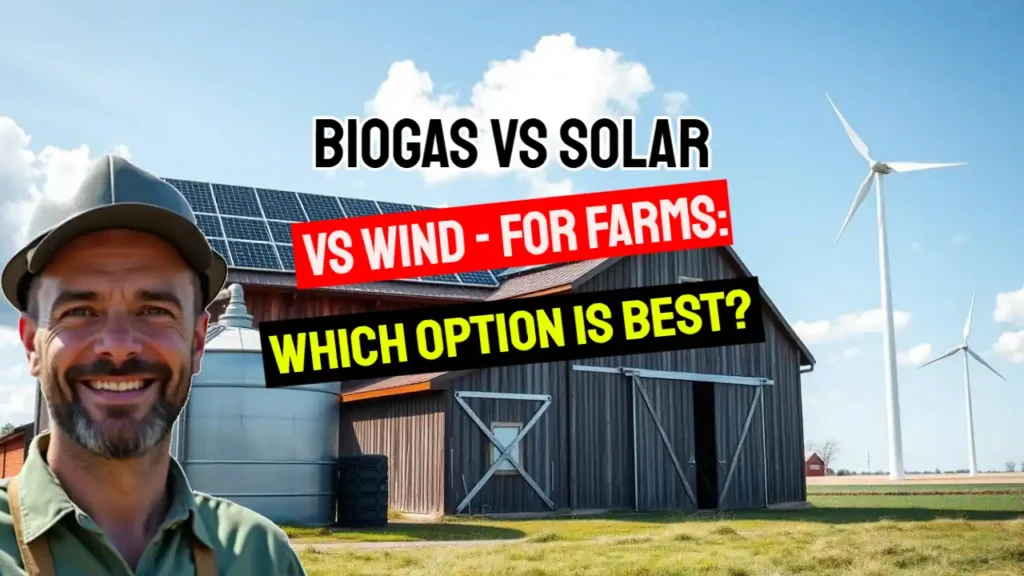
Solar Energy
Solar photovoltaic (PV) systems convert sunlight directly into electricity. Farms often have ample roof space on barns and other structures, as well as open land that can accommodate solar panels. Solar energy production aligns well with seasonal farm activities in many regions.
Wind Energy
Wind turbines convert the kinetic energy of moving air into electricity. Farms in open rural areas with consistent wind patterns can harness this energy effectively. Wind systems can range from small single turbines to larger installations, depending on land availability and energy needs.
Pre-requisites & Features Comparison
When considering renewable energy for your farm, understanding the basic requirements and features of each system is essential. The table below compares key aspects of biogas, solar, and wind energy systems:
| Feature | Biogas | Solar | Wind |
| Land Requirements | Moderate (0.25-1 acre for digester) | High (5-10 acres per MW) or can use existing roof space | Low per unit (0.25-1.5 acres per turbine) but needs spacing |
| Initial Investment | High ($4,000-$5,500 per kW) | Moderate ($1,800-$2,500 per kW) | Moderate to High ($1,500-$3,000 per kW) |
| Resource Requirements | Consistent supply of organic waste (manure, crop residue) | Adequate sunlight (4+ peak sun hours daily) | Consistent wind speeds (9+ mph average) |
| Maintenance Needs | High (daily to weekly monitoring) | Low (occasional cleaning, minimal moving parts) | Moderate (annual professional inspection) |
| Energy Output Consistency | High (24/7 operation possible) | Variable (daylight dependent, seasonal) | Variable (wind dependent, day/night) |
| Scalability | Moderate (can expand with additional digesters) | High (easily add more panels) | Limited (site-specific constraints) |

Sustainability Comparison
Sustainability goes beyond just renewable energy production. It encompasses lifecycle emissions, resource renewability, waste management, and long-term viability. Here's how biogas, solar, and wind energy compare in sustainability metrics:
| Sustainability Factor | Biogas | Solar | Wind |
| Lifecycle Carbon Emissions | Very Low (28-45 g CO₂/kWh) | Low (30-80 g CO₂/kWh) | Lowest (11-12 g CO₂/kWh) |
| Resource Renewability | High (continuous waste generation on farms) | Unlimited (sunlight) | Unlimited (wind) |
| Waste Management Benefits | High (converts farm waste to energy) | None (no waste processing) | None (no waste processing) |
| Byproduct Value | High (digestate as fertilizer) | None | None |
| System Lifespan | 15-20 years | 25-30 years | 20-25 years |
| End-of-Life Recyclability | Moderate (65-70% recyclable) | Moderate (80-85% recyclable) | High (85-90% recyclable) |
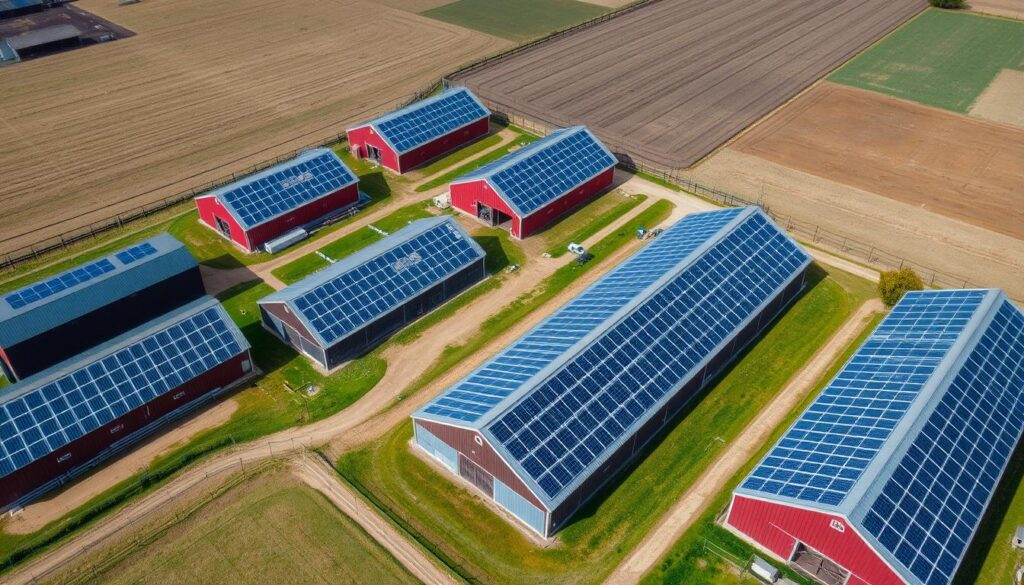
Planning and Regulatory Considerations
Implementing renewable energy on your farm involves navigating various planning and regulatory requirements. Understanding these challenges in advance can help you prepare for a smoother approval process:
| Planning Factor | Biogas | Solar | Wind |
| Permit Complexity | High (environmental, waste handling, gas safety) | Low to Moderate (building, electrical) | High (height restrictions, noise, wildlife) |
| Grid Connection Requirements | Moderate (consistent output helps) | Moderate (inverters, potential grid upgrades) | Complex (variability management) |
| Typical Approval Timeline | 6-18 months | 2-6 months | 12-24 months |
| Zoning Considerations | Industrial/agricultural zoning often required | Generally permitted in agricultural zones | Height restrictions, setbacks from property lines |
| Environmental Assessments | Extensive (water, air quality) | Minimal (visual impact, glare) | Extensive (birds, bats, noise) |
| Available Incentives | Tax credits, waste management grants, RNG credits | Tax credits, net metering, REAP grants | Tax credits, production incentives |
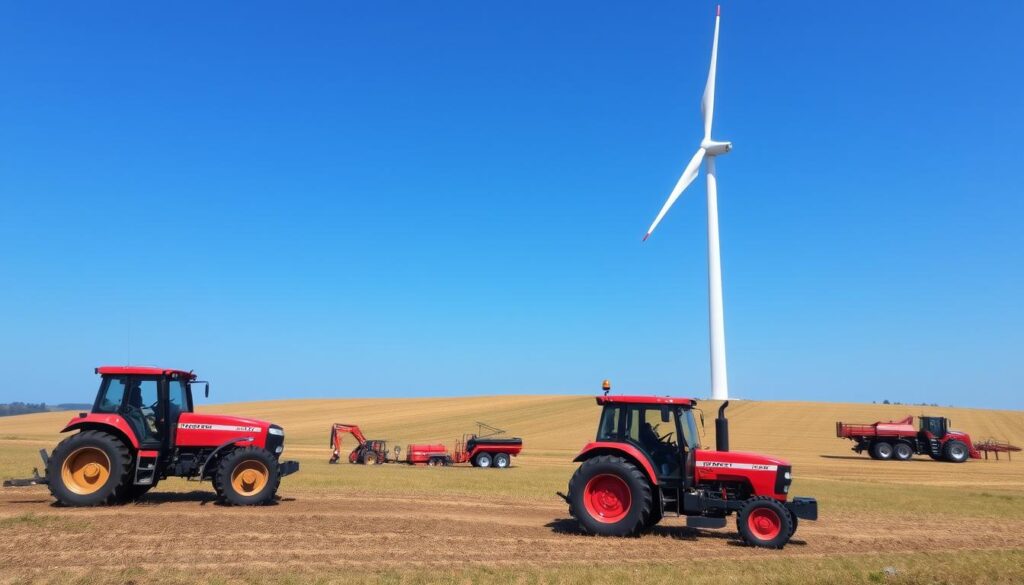
Good Neighborliness and Community Impact
Renewable energy installations can affect neighboring properties and the wider community. Understanding these impacts is crucial for maintaining good relationships and gaining community support:
| Community Factor | Biogas | Solar | Wind |
| Noise Impact | Low to Moderate (pumps, generators) | None | Moderate (blade noise, mechanical sounds) |
| Odor Concerns | Potential issues if poorly managed | None | None |
| Visual Impact | Low (most equipment is low-profile) | Moderate (visible panels, reflections) | High (tall structures visible from distance) |
| Traffic Increase | Moderate (feedstock delivery if importing waste) | Low (maintenance only) | Low (maintenance only) |
| Property Value Effects | Potential negative if odor issues | Minimal impact | Potential negative within visual range |
| Community Acceptance | Mixed (concerns about odor, benefits of waste management) | Generally positive | Mixed (visual concerns, noise issues) |
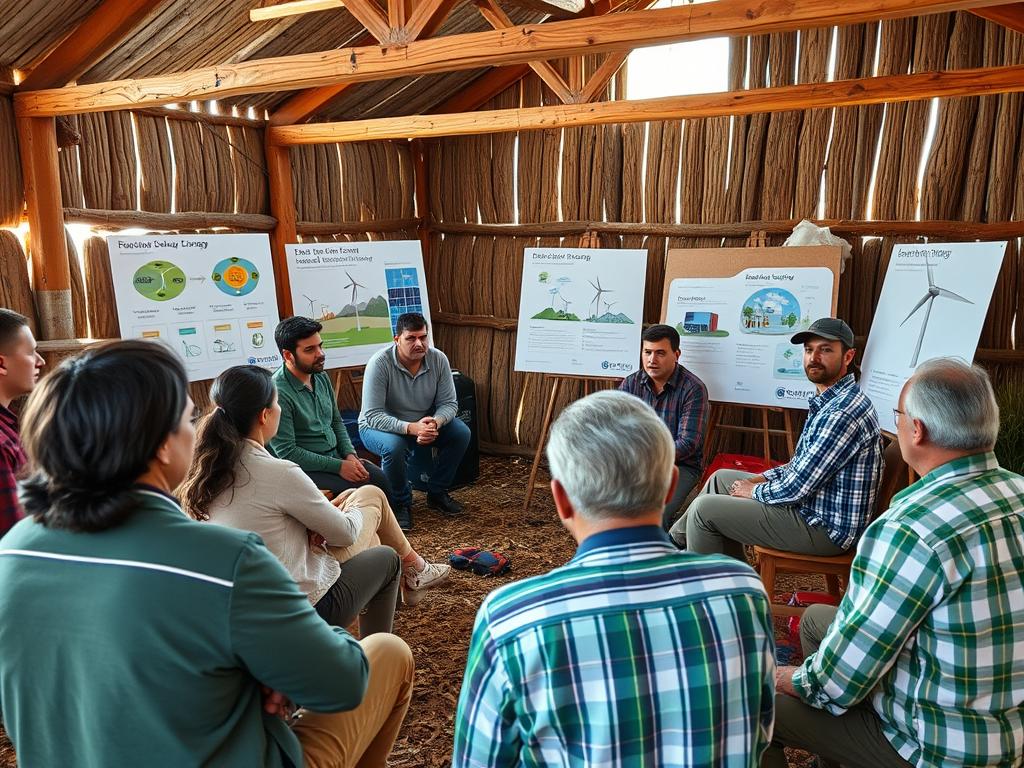
Environmental Impact Comparison
While all renewable energy options offer environmental benefits compared to fossil fuels, they each have different ecological footprints that should be considered:
| Environmental Factor | Biogas | Solar | Wind |
| Land Use Impact | Low (compact systems) | Moderate to High (large land area unless roof-mounted) | Moderate (turbine footprint small, but spacing needed) |
| Wildlife Impact | Minimal | Low (habitat displacement if ground-mounted) | Moderate (bird and bat collision risks) |
| Water Usage | Moderate (process water) | Very Low (occasional cleaning) | None |
| Soil Quality Effects | Positive (digestate improves soil) | Neutral to Negative (shading affects growth) | Minimal |
| Air Quality Impact | Positive (reduces methane emissions from waste) | Positive (no emissions) | Positive (no emissions) |
| Carbon Offset Potential | Highest (prevents methane release + generates energy) | High (replaces fossil fuel electricity) | High (replaces fossil fuel electricity) |
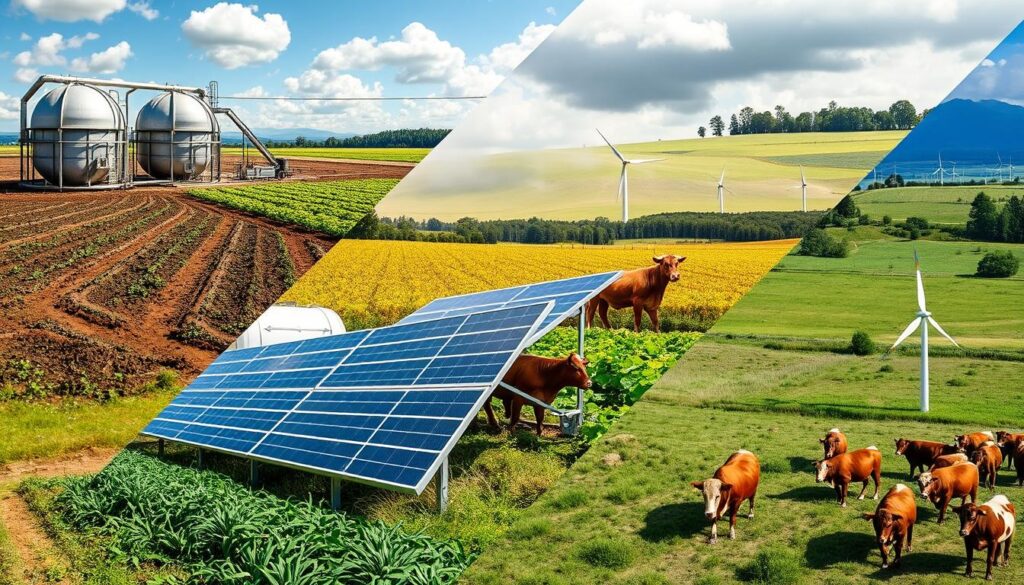
Comparative Analysis: Biogas vs Solar vs Wind for Farms – Which Option Is Best?
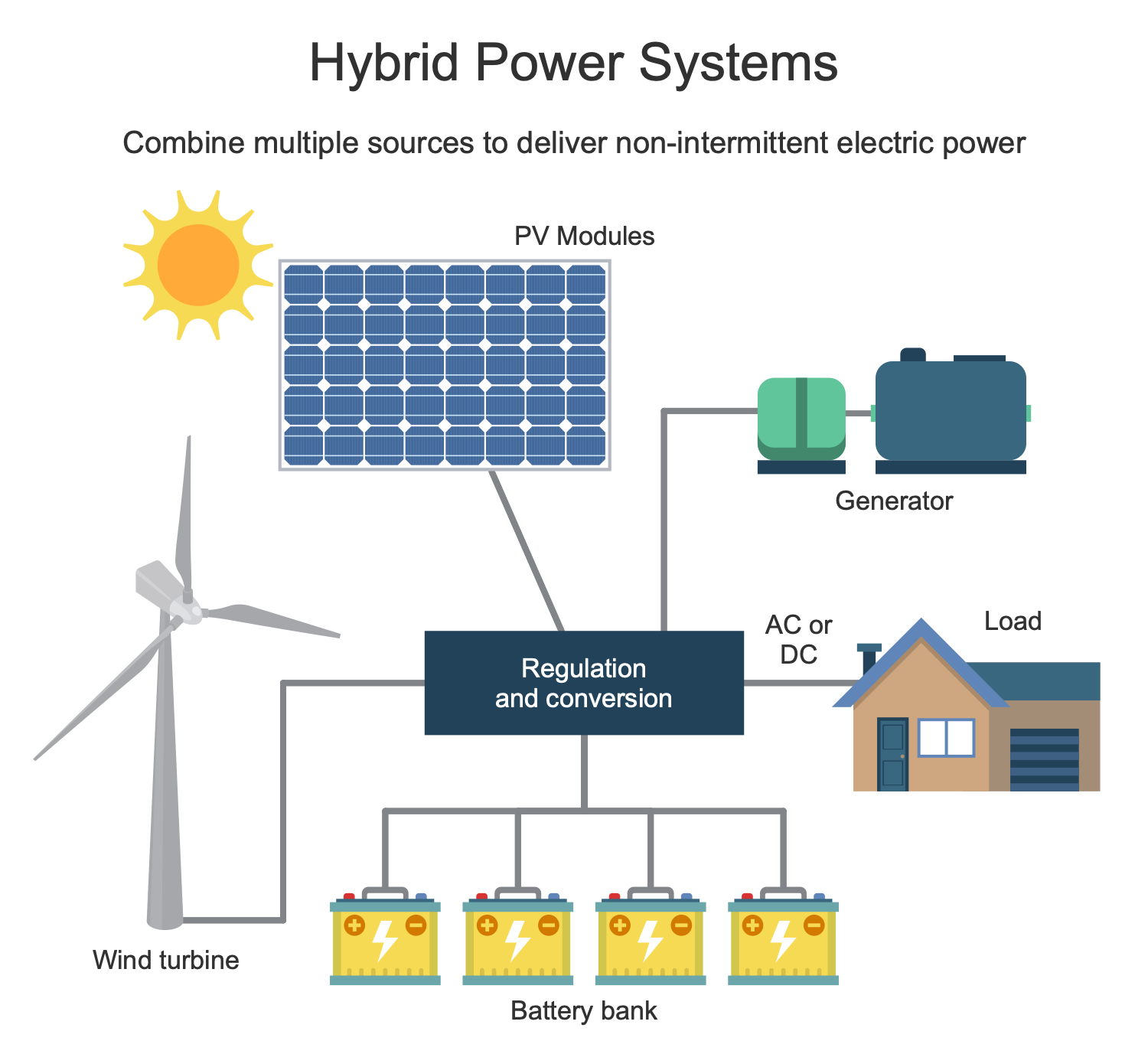
“Green Energy Solution | ConceptDraw.com” from www.conceptdraw.com and used with no modifications.
If instead of batteries you substitute a biogas plant, the infographic above provides a visual comparison of the three renewable energy options. However, determining which option is “best” depends entirely on your specific farm situation. Let's examine some key scenarios where each technology might be most appropriate:
Biogas May Be Best For:
- Livestock operations with significant manure production
- Farms seeking waste management solutions
- Operations needing consistent 24/7 energy
- Farms with limited land but abundant organic waste
- Regions with strong incentives for methane reduction
Solar May Be Best For:
- Farms in sunny regions with high electricity rates
- Operations with large roof areas on barns/buildings
- Farms with daytime-dominant energy needs
- Operations seeking lowest maintenance renewable option
- Regions with strong net metering policies
Wind May Be Best For:
- Farms in consistently windy, open rural areas
- Operations with high energy demands
- Farms with limited suitable roof space for solar
- Regions with wind energy incentives
- Operations seeking to maximize energy production per acre

Biogas vs Solar vs Wind for Farms – Pros and Cons Summary
Biogas Advantages
- Provides dual benefits: waste management and energy production
- Produces consistent, reliable power regardless of weather
- Creates valuable byproduct (digestate) for fertilizer
- Reduces methane emissions from agricultural waste
- Can be integrated with existing farm waste management
Biogas Challenges
- Higher initial investment and operational complexity
- Requires consistent feedstock supply
- More maintenance and monitoring needed
- Potential odor issues if poorly managed
- Complex permitting process if imported food waste is co-digested
Solar Advantages
- Low maintenance requirements
- Predictable energy production patterns
- Can utilize existing roof space
- Modular and easily expandable
- Simplest permitting process of the three options
Solar Challenges
- Intermittent production (daylight hours only)
- Seasonal variation in output
- Requires significant space if ground-mounted
- May require battery storage for evening use
- Performance affected by dust, snow, and shading
Wind Advantages
- Highest energy output per unit
- Can generate power day and night
- Small land footprint for actual turbine
- Lowest lifecycle carbon emissions
- Compatible with continued farming around turbines
Wind Challenges
- Highly dependent on consistent wind resources
- Visual impact and potential community opposition
- Noise concerns for nearby residences
- More complex permitting process
- Higher maintenance costs for moving parts

Considering a Hybrid Approach
Many farms are finding that a combination of renewable energy technologies provides the most reliable and cost-effective solution. Hybrid systems can leverage the strengths of each technology while mitigating their individual weaknesses:
Biogas + Solar
This combination provides both consistent baseline power (biogas) and peak daytime energy (solar). The biogas system manages farm waste while solar panels utilize available roof space, creating complementary energy streams with different production profiles.
Wind + Solar
Wind and solar often have complementary production patterns—wind may be stronger at night and during winter months when solar production is lower. This combination can provide more consistent renewable energy throughout the year with minimal storage requirements.
Comprehensive Approach to Biogas vs Solar vs Wind for Farms
Some farms implement all three technologies, creating a highly resilient energy system. Biogas provides baseline power and waste management, solar generates daytime electricity, and wind captures energy during windy periods and at night.

Real Farm Applications: Success Stories
Dairy Farm Biogas Success
A 500-cow dairy farm in Wisconsin implemented a biogas digester that processes manure and food waste from nearby food processors. The system generates 250 kW of continuous power, enough to meet all farm electricity needs with excess sold to the grid. The farm also uses the digestate as high-quality fertilizer, reducing annual fertilizer costs by $45,000.
Orchard Solar Integration
A 200-acre apple orchard in Washington state installed solar panels on packing facility roofs and implemented innovative agrivoltaics with panels mounted above berry crops. The 350 kW system provides 80% of the farm's electricity while creating beneficial partial shade for heat-sensitive crops, increasing berry yields by 15%.
Mixed Farm Wind Energy
A 1,200-acre mixed crop and livestock farm in Iowa installed two 100 kW wind turbines. The turbines generate approximately 600,000 kWh annually, powering the entire farm operation with excess energy sold back to the utility. The farmer continues to cultivate crops and graze cattle around the turbines, maximizing land use efficiency.
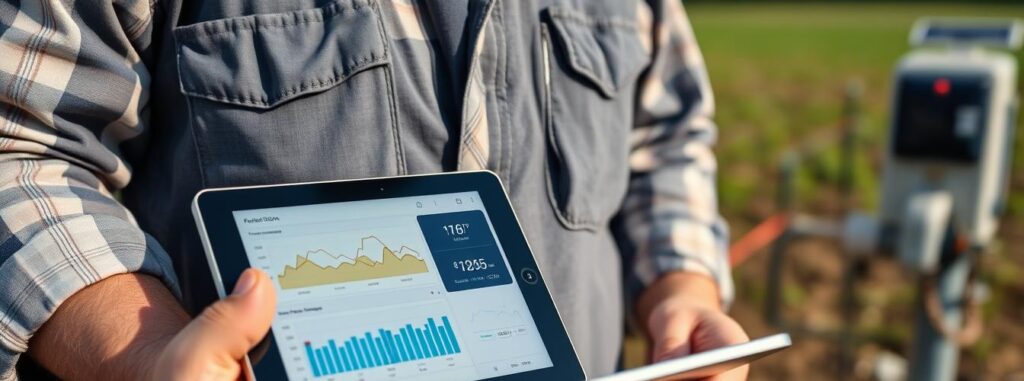
Biogas vs Solar vs Wind for Farms – Conclusion: Finding Your Farm's Perfect Energy Match
When it comes to choosing between biogas, solar, and wind energy for your farm, there is no universal “best” option. The optimal solution depends on your specific circumstances, including:
- Your farm's geographic location and climate conditions
- Available resources (organic waste, sunlight, wind)
- Farm size and layout
- Current and projected energy needs
- Capital available for investment
- Local regulations and incentives
- Long-term sustainability goals
Many successful farm renewable energy projects utilize a customized approach, often combining multiple technologies to create a resilient, efficient energy system. The key is conducting a thorough assessment of your specific situation and developing a tailored solution that maximizes benefits while minimizing challenges.
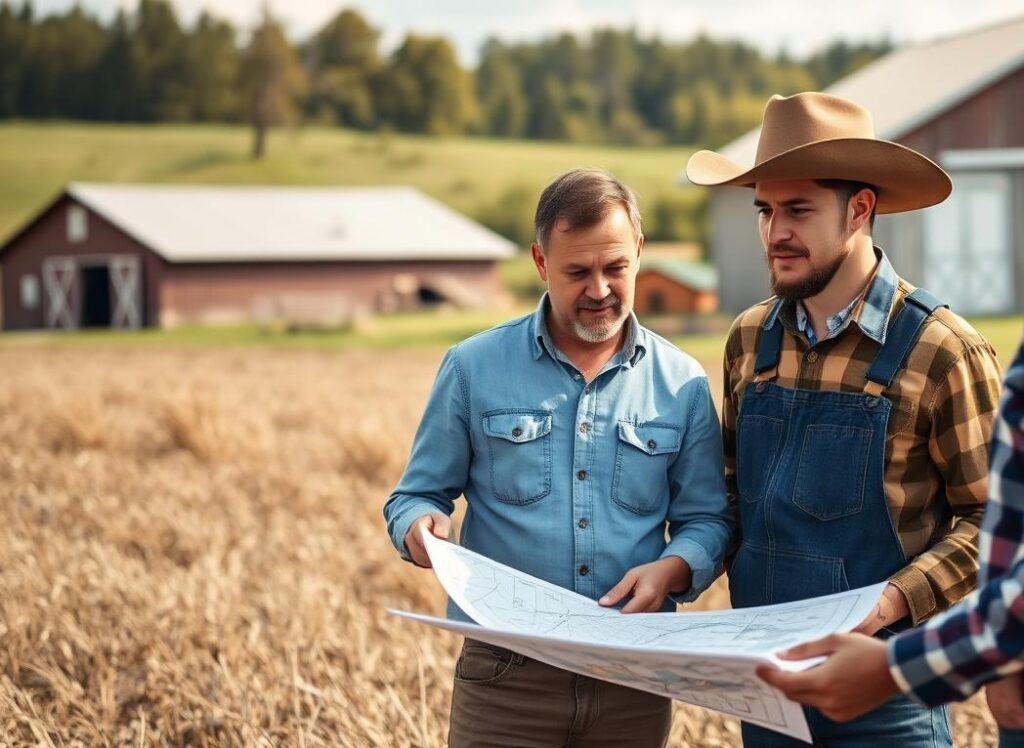
Need Expert Guidance for Your Farm's Best Renewable Energy Project?
Every farm is unique, and so is every renewable energy solution. At IPPTS Associates, we specialize in providing services in designing customized renewable energy systems that match your specific agricultural operation, resources, and goals. We will put together a team of experts can help you navigate the complex decision-making process, permitting requirements, and implementation challenges.
Get Advice on the Best Farm Energy Combination and Energy Assessment By Completing the Form Here




